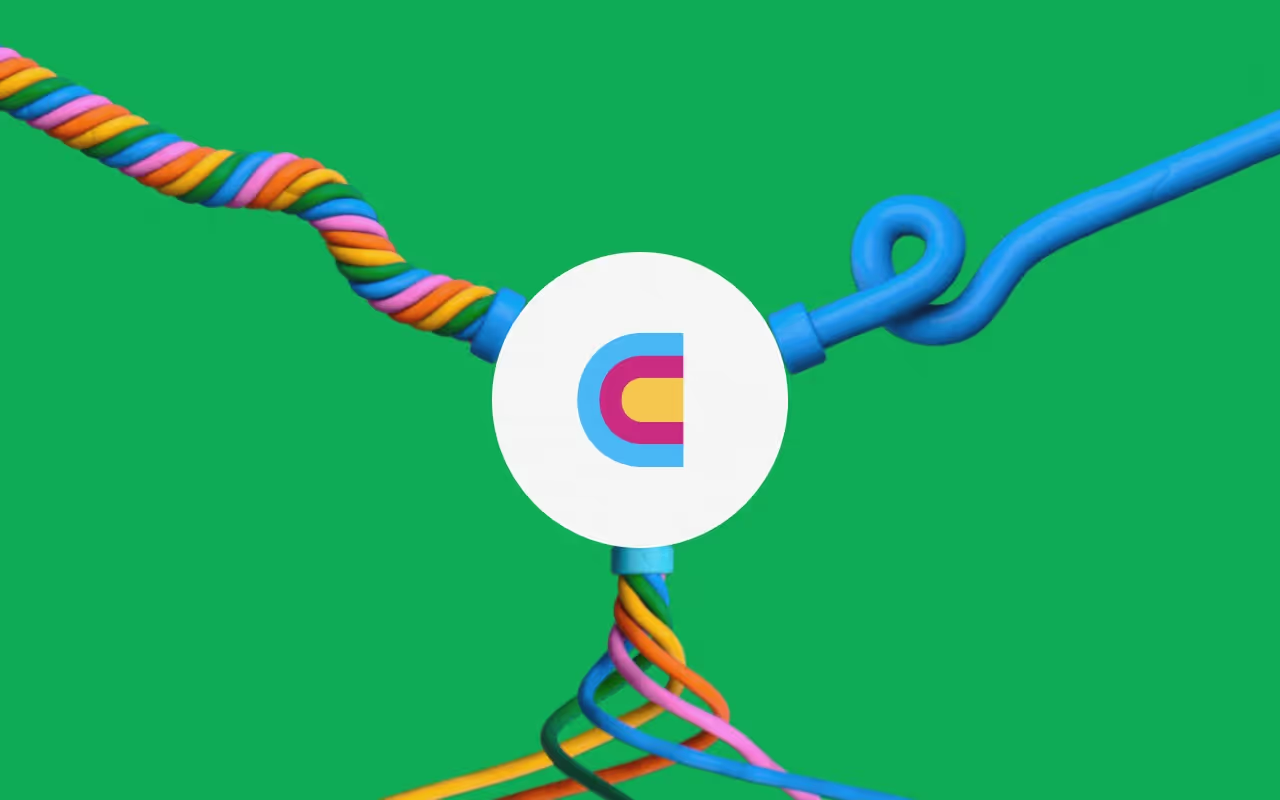🎯 Building Your ICP: Strategic Targeting
Introduction
In our last lesson, we explored Clay's TAM sourcing capabilities and how they can completely transform your prospecting approach. Today, we're diving into the foundation of all effective TAM sourcing: building your Ideal Customer Profile and establishing a solid data foundation.
Without nailing down your ICP, even the most sophisticated Clay workflows will generate noise instead of qualified prospects. The most successful Clay users start with a clear, evidence-based understanding of who they're trying to reach and why those prospects should care.
🚫 The Common ICP Mistake
Most teams approach ICP development backwards, jumping straight to demographics without understanding the underlying business logic.
Demographics-First Thinking
When building an ICP, people immediately start listing criteria: company size between 100-500 employees, technology industry, North American headquarters, $10M+ revenue. While logical, this preemptive demographic filtering misses the fundamental question of why these characteristics matter.
Pain-First Thinking
The right starting point is understanding pain points and buying motivation. Before defining any demographic criteria, you need to answer fundamental questions that reveal who actually needs what you're selling:
Who feels this pain daily? Which roles or departments experience the problem your solution solves as a recurring frustration rather than an occasional inconvenience?
Who has the budget to solve it? Which companies have the financial resources and willingness to invest in solutions to this problem?
Who has authority to buy? Which individuals or teams have purchasing power or significant influence over buying decisions?
Who is actively looking for solutions? Which prospects are currently researching alternatives rather than tolerating the status quo?
What qualities do my top customers share? Which characteristics consistently appear across your most successful customer relationships?
The Hypothesis Framework
Remember that your initial answers are just your current best hypothesis based on limited data. You'll continually refine them as you gather more market intelligence and customer insights through actual prospecting and sales conversations.
This iterative approach means your ICP becomes more accurate over time rather than remaining a static guess about your market.
📊 The Problem Severity by Frequency Matrix
Your answers to those fundamental questions help you construct the Problem Severity by Frequency Matrix, which provides clear guidance on prioritization and messaging strategy.

Understanding the Axes
The Y-axis represents problem severity—how much this issue actually hurts your prospect's business in terms of lost revenue, wasted time, or operational inefficiency.
The X-axis represents problem frequency—how often they encounter this problem in their daily operations, whether it's a constant drain or an occasional frustration.
The Sweet Spot: High Pain + High Frequency
The optimal target is prospects experiencing both high pain and high frequency. These companies feel the problem acutely and encounter it constantly, making them desperate for solutions and willing to prioritize evaluation and purchase.
Practical Example: Data Enrichment
If you're selling data enrichment solutions, consider two prospect profiles:
High Priority Prospect: A company researching 500 prospects per week experiences high pain (massive time drain, bottleneck to pipeline growth) and high frequency (daily struggle). They feel the inefficiency constantly and it directly impacts their revenue generation capacity.
Lower Priority Prospect: A company researching only 50 prospects per week might be interested in efficiency improvements, but they're not desperate enough to prioritize finding and buying a solution. The pain exists but isn't severe enough to drive urgent action.
This matrix helps you prioritize who to target first and understand how urgently they need what you're selling, informing both targeting decisions and messaging urgency.
🔍 Three Dimensions of ICP Definition
Build your ICP across three interconnected dimensions that create a comprehensive prospect profile when layered together.
Dimension 1: Firmographic Criteria
These are basic company characteristics that provide demographic filtering: employee count ranges, revenue bands, industry classifications, and geographic locations. While essential for initial filtering, these are your table stakes criteria that define broad market segments.
Firmographics alone don't predict buying behavior or need—they simply define which companies could theoretically use your solution based on their basic characteristics.
Dimension 2: Technographic Criteria
Technographics reveal what tools and technologies prospects currently use, providing crucial context about their sophistication level and integration requirements.
Are they using Salesforce or HubSpot for CRM? Outreach or SalesLoft for sales engagement? Marketing automation platforms or manual email? Their current tech stack tells you about their operational maturity, integration needs, budget allocation, and competitive displacement opportunities.
This dimension transforms generic company profiles into specific opportunity assessments based on technology environment.
Dimension 3: Behavioral Criteria
Behavioral signals indicate timing and intent—the difference between companies that fit your demographic profile and those actually ready to buy right now.
Are they hiring rapidly, suggesting growth that creates new needs? Did they just raise funding, indicating budget availability and growth ambitions? Are they posting jobs for go-to-market roles, signaling sales expansion? Have they recently changed executives, potentially triggering tool reevaluation?
These behavioral signals identify the optimal timing for outreach when prospects are most receptive.
The magic happens when you layer these three dimensions together. A company might fit your firmographic profile (right size, industry, geography) and have compatible technographics (using complementary tools), but without the right behavioral signals (growth, hiring, funding), they may not be actively looking for solutions.
🎯 Real-World Example: 6Sense's ICP Framework
Let's examine how a sophisticated B2B company structures their ICP to demonstrate advanced targeting in practice.
Core Market Definition
6Sense targets companies with 100+ employees in US and EMEA markets, focusing primarily on technology, financial services, and manufacturing industries. These firmographic criteria define their broad addressable market.
Multiple ICP Variants
But here's the crucial insight: they don't have one monolithic ICP—they have six distinct variants based on use case and buying behavior. This segmentation enables precision targeting and messaging.
Enterprise ICP: Companies with 1000+ employees using Salesforce with complex, multi-stakeholder sales cycles. These accounts require field sales, custom implementations, and executive-level engagement.
Mid-Market ICP: Companies with 100-500 employees featuring simpler tech stacks but showing rapid growth signals like aggressive hiring or recent funding. These prospects need faster deployment and clearer ROI demonstration.
Each variant has different messaging frameworks, outreach sequences, sales processes, and success metrics. This is precision targeting: recognizing that different segments need fundamentally different approaches despite falling within the same general market category.
✅ ICP Validation Checkpoints
Before finalizing your ICP, validate it against practical business constraints and market realities using these three critical checkpoints.
Checkpoint 1: Market Size Estimation
How many companies actually match your criteria? Run the numbers to ensure you're finding the sweet spot between precision and volume.
Too Narrow: Defining perfect customers but discovering only 50 total companies globally means you'll exhaust your addressable market quickly with no room for expansion or experimentation.
Too Broad: Loose criteria that match thousands of companies means you'll waste resources on low-intent prospects who technically fit but rarely convert.
Find the balance where you have enough high-quality prospects to build sustainable pipeline while maintaining meaningful qualification standards.
Checkpoint 2: Competitive Landscape Analysis
Who else targets these exact companies? Understanding competitive intensity helps you assess whether your ICP represents a strategic opportunity or a crowded battlefield.
Sometimes a less "perfect" ICP with significantly less competition is more valuable than targeting the obvious segment where you're competing against ten well-funded competitors for attention.
Consider both direct competitors (offering similar solutions) and indirect competitors (solving the same problem differently) when assessing competitive density.
Checkpoint 3: Addressable Market Calculations
Of the companies matching your ICP criteria, how many can you realistically reach and convert given your resources, sales capacity, and market position?
This reality check sets realistic pipeline expectations and helps you understand whether your ICP aligns with your business growth targets.
💡 Reverse Engineering your ICP
Great ICPs aren't about who you want to sell to—they're about who actually wants to buy from you. This distinction is crucial and often overlooked in theoretical ICP development.
Start With Existing Customers
Begin with your current customer base and analyze your top 10-20 accounts looking for consistent patterns. What characteristics did they share before becoming customers? What signals indicated they were ready to buy rather than just browsing?
Look for patterns in:
- Company characteristics when they first engaged
- Specific problems they were trying to solve
- Technologies they were using or replacing
- Organizational changes happening at the time
- Buying process and decision-making dynamics
Take those patterns and reverse-engineer them into searchable criteria for Clay. If you notice that most successful customers had recently hired VP-level sales leaders, make "new VP of Sales hires in last 90 days" part of your targeting criteria.
If top customers consistently mention specific pain points during sales conversations, build searches that identify companies likely experiencing those same challenges based on their tech stack, team size, or industry dynamics.
Continuous Evolution
Your ICP will naturally evolve as your business develops and matures. What worked six months ago might need adjustment based on changing market dynamics, new competitors, product evolution, or shifts in buying behavior.
Build regular ICP review into your quarterly planning, examining conversion data, sales cycle length by segment, and customer success metrics to identify which characteristics consistently predict successful outcomes.
✅ Key Takeaways
Effective ICP development starts with understanding pain, budget, authority, and intent before defining demographics. The Problem Severity by Frequency Matrix helps prioritize prospects based on how acutely and frequently they experience your target problem.
Build ICPs across dimensions—firmographic, technographic, and behavioral criteria—to create comprehensive prospect profiles when layered together. The magic happens at the intersection of these dimensions.
Validate your ICP through market size estimation, competitive landscape analysis, and addressable market calculations to ensure it's both strategic and practical. The best ICPs identify enough prospects to build sustainable pipeline without being so broad they waste resources.
Great ICPs are reverse-engineered from actual customer success patterns rather than theoretical assumptions about ideal prospects. Start with your top customers and work backward to identify the characteristics and signals that predicted their buying behavior.
Ready to activate your ICP? In our next lesson, we'll translate these strategic frameworks into practical Clay workflows that systematically identify and qualify prospects matching your ideal customer profile at scale.
Connect, explore and learn together
Read our GTM blog, or try out our top Claybooks and templates to transform your growth ideas into outreach in minutes.





















